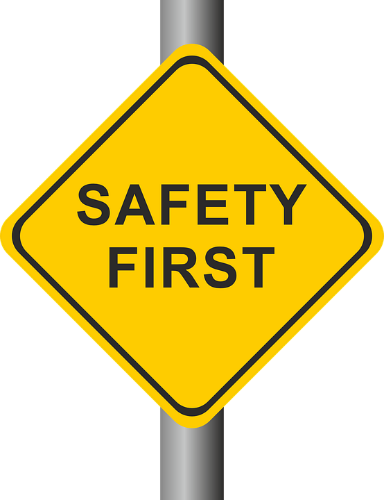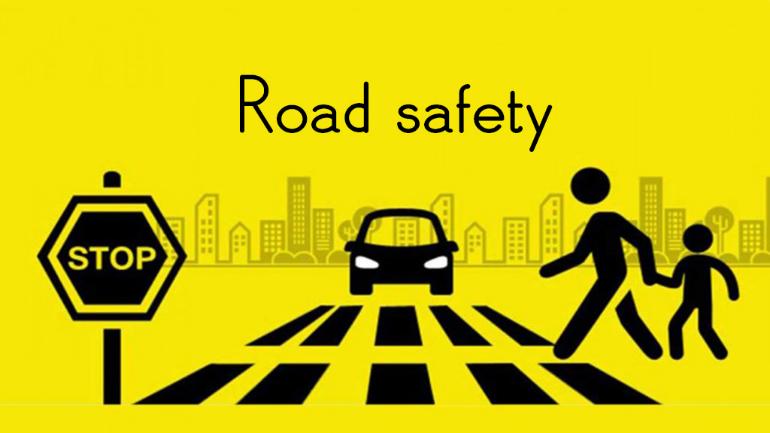National Safety Week
National Safety Week
 The National Safety Day is celebrated in India every year on 4 March to enhance the awareness of safety among people. It is organised by the National Safety Council, which is a self-governing body that was established on 4 March, 1966. Celebrated through-out the country, the National Safety Day aims to prevent the loss of life from various dangers and helping people with safety, health and environment-related support services.
The National Safety Day is celebrated in India every year on 4 March to enhance the awareness of safety among people. It is organised by the National Safety Council, which is a self-governing body that was established on 4 March, 1966. Celebrated through-out the country, the National Safety Day aims to prevent the loss of life from various dangers and helping people with safety, health and environment-related support services.With the increasing threats to life, there comes a need to not only aid adults but also sensitise and educate the young on the importance of safety across several standards of life. As students are more vulnerable to several menaces due their age to both off and online threats, here are some of the issues that we can address to equip them to handle their safety in an adequate and safe manner-
1.Good Touch vs Bad Touch- Good Touch or physical affection is a great way to teach students to learn about love and care. Educating them to differentiate  the ‘true’ meaning between the two words with adequate examples is very important-
the ‘true’ meaning between the two words with adequate examples is very important-
 the ‘true’ meaning between the two words with adequate examples is very important-
the ‘true’ meaning between the two words with adequate examples is very important- - Good Touche feel nice and warm and makes one feel safe and protected.
- Showing them real-life situations, which include good touches like handshakes, high fives, etc.
- Telling them that their body belongs to them alone, and they have the absolute choice to deny anyone else, including their parents, from touching them if they wish.
Bad Touch can lead to physical, emotional, psychological trauma on the child and it is important that the child distinguishes between bad touch and bad touch and how to handle them-
- Educating them about the different levels of security for their body which are- parts that are acceptable to touch, uncomfortable to touch and forbidden to touch, informing them that touches like ‘being patted on the head or back’ might be acceptable but ‘being fondled’ in the private regions such as the chest, buttocks, and genitals is unacceptable.
- Informing them that it does not matter if the touch happens with clothes on, it still counts as bad or unacceptable.
- Sensitising them to know when and how to call out for help if they are feeling trapped or in an uncomfortable situation.
2.Road Safety- Road safety is one of the most common and important topics that needs to be discussed with the country's young citizens to sensitise them to be aware and  safe while traveling on the road. Road safety is important to reduce the risk of road accidents and injuries.
safe while traveling on the road. Road safety is important to reduce the risk of road accidents and injuries.
 safe while traveling on the road. Road safety is important to reduce the risk of road accidents and injuries.
safe while traveling on the road. Road safety is important to reduce the risk of road accidents and injuries.- Educating the students on the various hand signals that are used while crossing a road, learning hand signals such as stop, left and right indications help avoid confusion and risk for students while traveling on the road.
- Informing them about the various traffic signals and their colours- red, green and orange and important landmark symbols like a pedestrian crossing will also help them understand and make it easier to follow.
- Sensitising them on what to do in case they experience or see a person in an accident or an injury, teaching them about the various helpline numbers such as ambulance, fire and safety, etc. would enable them to act fast in an emergency situation.
3.Cyber Safety- The internet is without a doubt one of the best resource available to us. Unfortunately, it is also extremely  dangerous if one doesn’t know what lurks behind it. Students need to know the importance of safe searching and what one must do when he/she encounters cyberbullying.
dangerous if one doesn’t know what lurks behind it. Students need to know the importance of safe searching and what one must do when he/she encounters cyberbullying.
 dangerous if one doesn’t know what lurks behind it. Students need to know the importance of safe searching and what one must do when he/she encounters cyberbullying.
dangerous if one doesn’t know what lurks behind it. Students need to know the importance of safe searching and what one must do when he/she encounters cyberbullying.- Educating the students to never leave their computers or gadgets unattended. Also, informing them to never share their devices with anyone especially strangers.
- Sensitising them about the importance of ‘clicking’, as one click is all it takes for viruses to enter devices and leak passwords and other personal details. Telling them to ensure that the emails and the links they receive are from a reputable source and to never install any malicious software without informing their teacher or parent first.
- Teaching the students to protect their accounts with strong unique passwords that have a combination of 10 uppercase, lowercase, symbols, and numbers. Also, educating them to never share their unique passwords to anyone or online to any site.
- Informing them to remain off social media sites and preventing them from creating online accounts until they are 13 years or above. Several unknown people with harmful intentions can send requests and gain access to the child’s private information, which could be avoided at all costs.
- Sensitising the students to be good responsible citizens who will report cyberbullying if they know of someone going through it or experience it themselves. Also, educating them to never take part in bullying others online or participate in any such negative activities online.
4.Safety against electronic equipment- An important topic that needs to be taught to students, especially the younger ones, is safety against electronic equipments. It is  necessary to instruct them on how to handle electrical equipment and to remain safe. Though used for day-to-day activities, electric equipments can be very dangerous when misused or handled incorrectly.
necessary to instruct them on how to handle electrical equipment and to remain safe. Though used for day-to-day activities, electric equipments can be very dangerous when misused or handled incorrectly.
 necessary to instruct them on how to handle electrical equipment and to remain safe. Though used for day-to-day activities, electric equipments can be very dangerous when misused or handled incorrectly.
necessary to instruct them on how to handle electrical equipment and to remain safe. Though used for day-to-day activities, electric equipments can be very dangerous when misused or handled incorrectly.- Informing the students to never play with loose wires, overheated equipment or to put their fingers or any other material in sockets.
- Instructing them to operate or handle all electronic equipment in the presence of a teacher or parent.
- Teaching the students to never touch any electronic types of equipment with wet hands. Also, telling them to wear the right kind of clothes with appropriate footwear while handling any electronic equipment.
- Guiding students to never bring any electronic equipment in close contact with fire, any sort of liquid or other flammable and inflammable material.
5.Fire drill + First aid- Though fire drills are taught as a theory in most schools, there needs to be a practical orientation conducted on what to do in case there is an outbreak of fire in the school building. Here are some of the pointers that a student needs to be taught during such an event-
- In case there is a fire, teaching the methods on how to remain calm and locate the nearest emergency exit to escape immediately.
 Teaching the students to call or inform the necessary emergency services in such cases. In case they are trapped inside the building which is on fire, educating the students to feel their ways before opening or shutting doors. If the doorknob feels warm, then advising them to not open the door.
Teaching the students to call or inform the necessary emergency services in such cases. In case they are trapped inside the building which is on fire, educating the students to feel their ways before opening or shutting doors. If the doorknob feels warm, then advising them to not open the door.- Educating the students to use the windows in case they are on the ground floor, to escape. If they are unable to do so, then advising them to block the doors with all the materials that are available in the room and precautioning them to sit down in any of the corners of the room.
Learning first aid is an invaluable life-skill. It helps children become more risk aware and equips them with the skills to keep themselves safe and help themselves or others if involved in a medical emergency. It also helps save their lives and others around them. First aid promotes a sense of safety, prevents the victim’s situation from turning worse, and preserve life. Here are some of the important ailments and health problems that students should know how to medically handle using a first aid-
- Bleeding
 Burns
Burns- Heatstroke
- Unresponsiveness or unconsciousness
- Head injuries
- Bone injuries
- Muscle injuries
- Joint injuries
- Choking
- Fainting
- Chest pains
- Asthma
This National Safety day, let us pledge to come forward and help students to understand the need to remain cautious about the imminent dangers around their society. With the right kind of education and awareness, we can teach them to tackle any form of danger or emergency and initiate steps to remain safe.





















